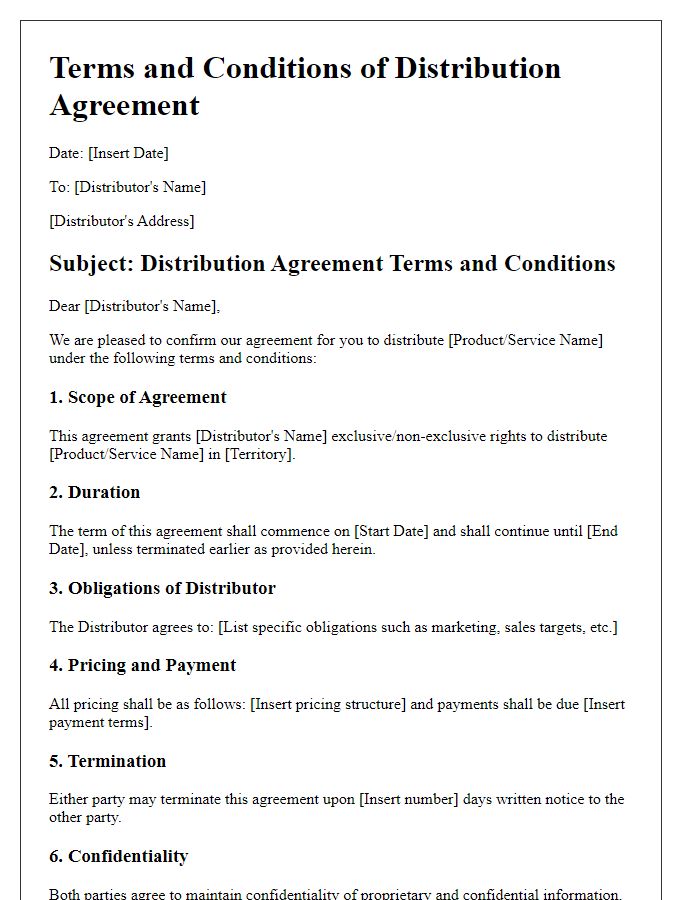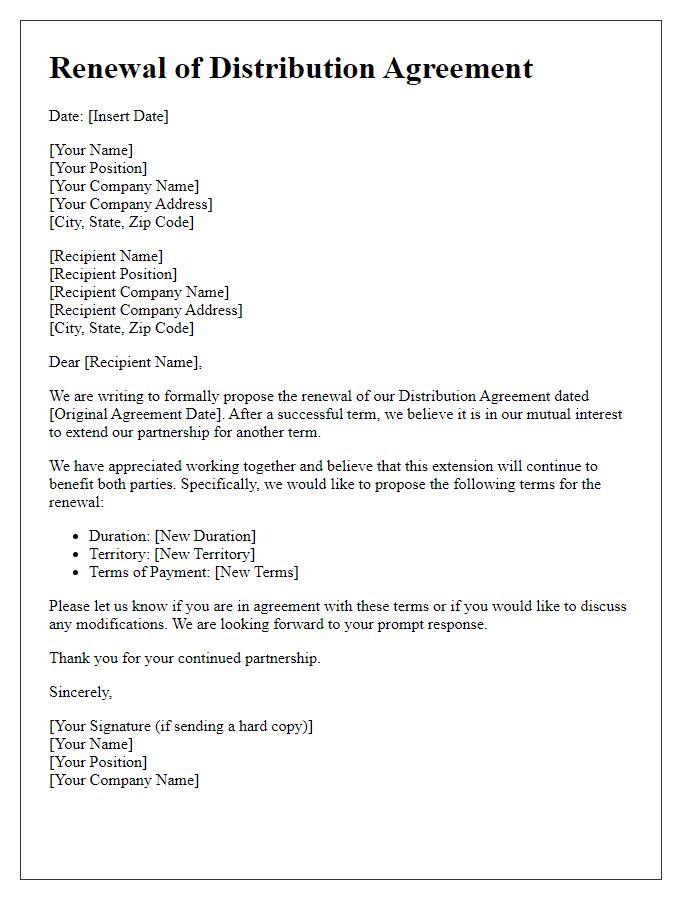Are you interested in streamlining your business operations and expanding your market reach? A distribution agreement could be the key to fostering strong partnerships and ensuring your products reach the right audience. This letter template serves as a valuable starting point for crafting a solid distribution agreement that outlines the responsibilities and expectations of both parties. Dive in to explore the essential components and tips to make your agreement effective and beneficial for everyone involved.

Parties Involved
A distribution agreement typically involves key entities such as manufacturers, wholesalers, or retailers. Manufacturers, such as ABC Electronics, focus on producing goods like smartphones, while wholesalers, like XYZ Distributors, specialize in purchasing large quantities for further distribution. Retailers, such as Best Buy, sell products directly to consumers. Legal jurisdictions also play a crucial role in determining the laws governing such agreements. It's vital to outline specific terms related to territories, product lines, and obligations of each party. Notable laws guiding such agreements may include the Uniform Commercial Code (UCC) in the United States or the EU regulations for distribution within member states. Clear identification of each party's rights and responsibilities can facilitate smoother operations and minimize conflicts.
Terms and Conditions
Creating a distribution agreement requires detailed consideration of specific terms and conditions that govern the relationship between the supplier and distributor. A distribution agreement typically includes clauses related to the definition of the territory (specific geographic areas), product specifications (what products are included), duration of the agreement (start and end dates), obligations of the distributor (reporting sales and inventory levels), pricing structures (wholesale prices and suggested retail prices), payment terms (net payment period), delivery conditions (shipping responsibilities), marketing responsibilities (advertising and promotional activities), and termination clauses (grounds for ending the agreement). It's crucial to outline dispute resolution procedures (methods for resolving conflicts, such as mediation or arbitration) and compliance with applicable laws (regulations governing sales in each territory) to ensure clarity for both parties involved.
Distribution Rights
A distribution agreement details the legally binding terms between parties regarding the distribution rights of products or services. These agreements often specify the product types, territories covered (such as country names or regional designations), and duration of rights granted (typically expressed in years). Additionally, they may outline pricing structures, payment terms, and conditions specific to promotional activities. Essential entities involved include the supplier, often represented by a manufacturer or wholesaler, and the distributor, the entity responsible for promoting and selling the products to end consumers. Other critical elements are performance criteria, termination clauses, and intellectual property rights related to branding and trademark usage. Properly crafted distribution agreements protect both parties' interests and facilitate successful market penetration and sales growth.
Pricing and Payment Terms
The distribution agreement must clearly outline the pricing structure for the goods being sold, including the wholesale price (the cost at which distributors purchase products) and any suggested retail price, which serves as a guide for final customer pricing. Payment terms should stipulate the payment schedule, such as net 30 days, requiring payment within thirty days of invoice issuance. Details regarding late fees for overdue payments and acceptable payment methods, like bank transfers or credit cards, must also be specified. Additionally, clauses addressing discounts for bulk purchases, promotional pricing for new product launches, and potential price adjustments reflecting market conditions or manufacturing cost fluctuations should be included to ensure transparency and mutual understanding between the parties involved.
Termination Clause
The termination clause in a distribution agreement outlines the conditions under which either party can terminate the contract without incurring penalties. This section typically includes notice periods, such as the requirement of a 30-day written notice, and specific reasons for termination, including breach of contract, insolvency, or failure to meet performance metrics. The clause may also detail the obligations upon termination, such as the return of unsold inventory and settlement of outstanding payments. Additionally, it is important to address any intellectual property considerations, ensuring that proprietary rights remain intact post-termination. This ensures both parties are aware of their rights and responsibilities, promoting a clear and effective end to the business relationship when necessary.













Comments